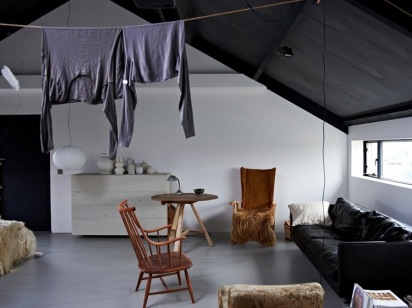
A few weeks ago, former Associate Editor of British ELLE Decoration and Top Design judge Amanda Talbot sent me a heartfelt note with a link to her new book, Rethink: The Way You Live. She thought it might resonate with me, as I’ve slowly morphed into this odd, thinky design blog where I’m asking a lot of questions, searching for answers and trying to figure out how design applies to my life now. I don’t know if I’ve properly put this into words here, but I’m in this weird space where I see so much value in design, but am also seeing a lot of the cost. Consumerism, materialism, keeping-up-with-the-Jones-ism. I mean, these concepts have been around for years, yes. But for some reason, I’m feeling the weight of it in a bigger way. Something in my heart is stirring…
It’s inconvenient for a design blogger to feel this way. I’ve made a living uncovering trends and sharing products and labeling things as “must-haves” and “statement makers.” And I’d be a hypocrite if I didn’t admit that I still love doing it. I’m fascinated with discovering new designs that change the rules, new artists that struggle for their passions – and yes, every now and then, just a pretty dress. I mean, come on. I’m still pinning like a crazy person. I’m adding to the noise.
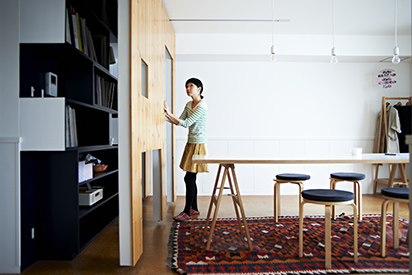
How do you even rectify that situation? How many times will I promote excessive spending in the name of “inspiration”? It’s a tough pill to swallow, one that Amanda knows all too well. In 2009, she left her high profile editor position at ELLE Decoration for one reason: she had fallen out of love with the lifestyle she helped to promote. “I could no longer connect with the content of these types of magazines because they didn’t relate to the way I lived,” she writes in Rethink. “My friends and most of my colleagues were increasingly removed from the reality of these magazines, too. I didn’t know anyone who had a glossy home filled with expensive designer furniture. My home was filled with IKEA, Habitat, flea market finds, press gifts and handmade bits and bobs.”
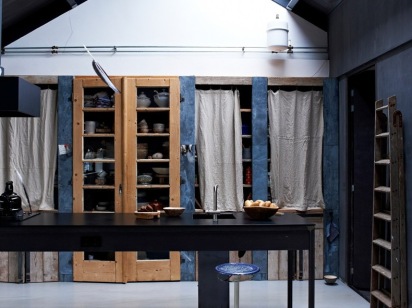
And here’s where her story gets interesting. Rather than retreating or hiding or switching career paths altogether, she set forth on a mission to find meaningful trends in the home. Trends that celebrated family and home and a brighter future. “My whole attitude and approach to design was turned upside down,” she writes. “I began questioning the conventions that had been in place for so long. I was looking at rooms in homes in a completely new way and found myself asking questions – Do we need an office in a home when there is only a laptop and iPad in sight? Is a bedroom only used for sleeping? Can a kitchen become an edible farm?”
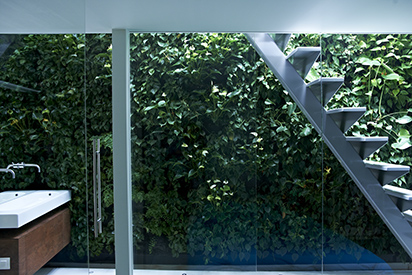
Her questions bring up many conversations Ken and I engaged in during our own renovation for HGTV.com. As a result, our office is also Bee’s playroom, our sunroom is a living room and our bedroom houses a handmade sauna. “Matching living trends with good design is no longer just about color, function and aesthetics. It is about creating a product, an idea, a space that can enhance our life and help us deal with what obstacles this changing world is throwing at us. How do we create a home that will bring out the best in us?”
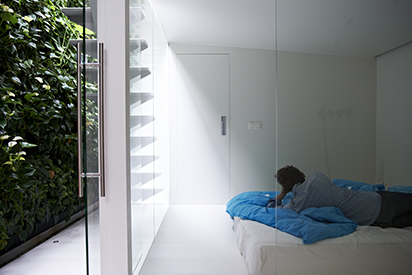
I hope for Design for Mankind to be my proverbial home, bringing out the best in me but also answering a few of those same questions I grapple with daily. What is design’s place in my life? Where is the line between celebrating simple, beautiful pleasures and promoting an excessive, consumer-driven lifestyle? How can I encourage readers – and myself – to live a life filled with more authenticity than stuff?
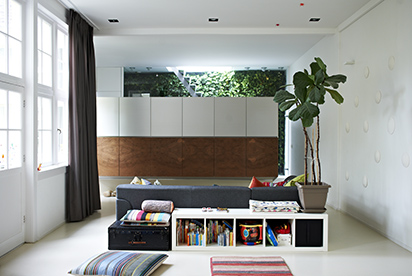
I’m still poring over the pages, endlessly inspired by Amanda’s courage to release this book into the world. It’s a read that was rejected by US publishers for being “too political,” but in actuality, it’s exactly what our country needs to hear. Overflowing with inspired themes like urban homesteading in the kitchen, multifunctional rooms and optimistic design, Amanda throws tradition and rules and status quo out the window of her impeccably curated home.
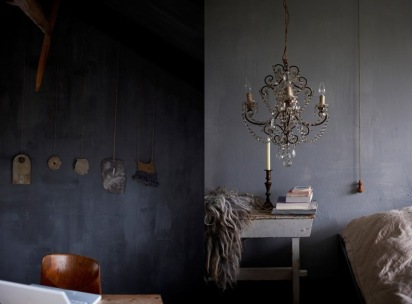
But perhaps what inspires me most about this book is Amanda’s personal story. To leave the fame of editorial positions and TV shows and embark on a journey that makes people feel slightly uncomfortable is a courageous act indeed. And her work doesn’t end there. She’s currently in the process of writing her second book entitled Happy: How To Achieve Happiness Through Design and is working closely with the city of Sydney to create the Happy Home Project: an idea that will provide revolutionary affordable housing for Sydney’s homeless.
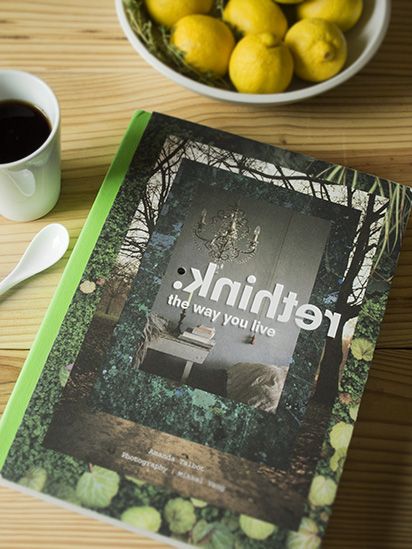
It’s a strikingly good example of a passionate woman using her strengths, background and skills to change her own world in a unique way. One that I, personally, am taking note of – rethinking, quite literally, the way I live.
Image Credits (sans bottom photo from me): Mikkel Vang for Rethink, published by Murdoch Books
p.s. The story of design and a surprisingly thoughtful kitchen trend.


WOW. I’m loving this! I have to be honest and say that I’ve felt a disconnect from a lot of blogs that focus on fashion, design, what have you in recent years for the very same reason that Amanda (and you) mention. This book sounds awesome and, as you mentioned, props to Amanda for leaving a cushy, awesome (in societal, keep up with the Jones terms) lifestyle behind to forge this new life path!
Thanks, Gail! It’s a totally great read.
Powerful post lady, I’m struggling with much of the same stuff.
Thank you, friend. (Just dm’d you!)
This is great Erin! Thanks for pointing this book out. As a artist living in a super expensive city, I tend to be a window shopper only. It is always a great reminder that there are other ways to make it and live in this life that don’t make you feel bad about yourself if you can’t keep up with others crazy buying habits…
Thank you, Debbie! And man, window shopping makes for SUCH a fun afternoon! The ideas abound!
Wow, I need a copy of this book immediately. I’m loving the direction your blog has taken – so worthwhile and meaningful.
And, of course, I’ll want to get the book from the library.
Amen, Janssen! :) And thank you for your encouragement!
WOW. Just WOW. I love the way you (and Amanda) have brought so much more meaning to what we’re all doing out in this world. Yes. Design a home you love. But a loving home means so much more than a space that will photograph well. So much more. Beautiful post, Erin. I think that many of us who have been so comfortable in this world are starting to yearn for something more – meaning perhaps? – and you’ve opened the conversation up so gracefully and eloquently. Thank you.
Ah, thank you, Tiffany! This one made me a bit teary!!! I think these questions are easy to forget when you’re swept up in the pinning, tweeting, facebooking frenzy, and I hope I never do. Thanks for your endless encouragement, sweet friend.
I agree with many of the comments it is a very true situation that good design enhances the QUALITY of life.
i love this post and really want this book. i’ve been struggling with the same ideas and you seem to really put it into words better than i ever could. I am pinning this on my To Read board. :)
Thank you, Keeley! I think you’ll really, really enjoy Amanda’s thoughts!
wow…very thought provoking…I admire you discussing these topics, as they keep me coming back for more!
Thank you, Susan!
I’ve been trying to get my hands on Amanda’s book for months. The only options I could even find for getting it were too expensive. I’ve wanted it because the ideas you’re expressing here have been in the forefront of my thinking about home for some time. As a home blogger, I’ve run into the same dilemmas you outline here. I called for a revolution about 6 months ago (http://www.thissortaoldlife.com/2013/01/02/say-you-want-a-revolution/). Our audience isn’t large, but it’s growing. I think you’re onto something.
Hi Rita, I’m so sorry you have had trouble purchasing Rethink. The book sold out much quicker than we ever expected so the few copies that were left sold for crazy prices. The good news it has been reprinted and you will find on Amazon a much happier price point again. ax
Thanks for letting me know–ordered and on its way! :-)
Oh Rita – I just clicked over to your post and it was so very beautiful and heartfelt. Thank you for sharing such an authentic and true perspective. This year has been a year of intention for me, as well. It’s been a welcome (very necessary) change. :)
Thanks, Erin. The thinking you’ve been doing is the reason I read. We (my blog partner and I) keep pondering how love of design fits in with living a meaningful life. We don’t want them to be mutually exclusive–and don’t believe they are.
Love all of this. This blog has quickly become a favorite of mine along with other more introspective ‘creative’ blogs such as Brain PIckings. I love and can’t seem to stop reading design/art/etc blogs that focus a bit more on consumption, spending, and quick enjoyment, but I’ve been noticing that the more I read pieces like this, the more I want to pick up a book, the more I want to watch a movie that challenges me, make a meal from scratch, focus on affordable quality instead of feeling like I have to choose between something ghastly expensive or totally go without. It feels good for this feeling that I think a lot of us ‘readers’ have (especially with the pounding visual consumption through social media) to start being reflected in those that we’ve followed and admired. Thank you!!
Nicole, this is such a thoughtful comment. Thank you so much! I think most of us love looking at pretty images and beautiful products, so I’m sure there’s a healthy balance there somewhere. I’m hoping to find it! :) And you’re right – picking up a great book or making a meal from scratch is a great start to getting there. :)
Erin- <3 this so very much! I recently read a book called "Twelve by Twelve" by William Powers which made me scrutinize my motivations for wanting a larger place to live and my consumer habits as well as revisit the reasons that I became a designer (initially political, not aesthetic).
The book chronicles the experiences of a development aid worker who needs to decompress after a particularly tough assignment. He ends up housesitting in North Carolina for a friend/mentor who lives in a 12'x12' shanty structure that does not have running water, electricity or bathroom facilities.
It is a powerful book that explores many of the ideas that you talk about in your blog post. Personally, it has motivated my husband and I to figure out how to make our 700 SF apartment in a wonderful urban neighborhood work for our family of a toddler and a cat.
Can't wait to read Amanda's book. Thanks again for all of your insightful and frank postings.
Oh, Rhea – thank you so much for your recommendation! I’m going to see if our library has this one! It sounds incredibly powerful. (And you know, is there ever a home that works for a toddler? I’m scared to find out!) ;)
This sounds lovely.
WOW. I absolutely love this post. I’ve often struggled with the materialism and consumerism that beautiful things tend to bring about in my life. I’m definitely going to check out this book. Thank you for this post. Thank you thank you thank you.
Ah, you’re so welcome, Erika – I think you’ll really enjoy it!
Erin, I love that you and others are thinking this way. It is how my little family lives our life and it was completely by accident. We did not consciously shun high cost, high demand home design, as two self-employed people we just simply couldn’t afford it, it wasn’t ever an option. But our home is filled with love, and our own good design, and I love hearing others discuss this. Also, I worked in the fashion industry for many years and adored it, then I had my first child and thought “what is this all for anyway”. I, too, had fallen out of love.
Oh, Blair – I totally hear you. There must be something about the shifting of priorities after children. I want to leave a legacy for my daughter, but will she simply see a woman who spent hours and hours uncovering treasures for people to buy? I want more. :)
I agree with this sentiment and think it’s healthier for all of us to live however we want to live, and create spaces around ourselves that feel good to us, regardless of whether they’re inspired by current trends. Authentic “trends” feel much better, so good on you and Amanda for noticing that bringing it to the fore.
Well done!
Thank you, Callie. :)
What the heck–the book was rejected in the US? Obnoxious. There should be a different publisher, then….I think this book would strike a chord with many readers here.
It’s interesting…I have seen lots of design that questions meaning (or design talk that questions it). I can’t help but think of Stefan Sagmeister, and his Happiness project….
So, is this a return to the beauty of functionality?
Ack, the above comment is mine (showing up as anonymous–weird! :) )
What the heck–the book was rejected in the US? Obnoxious. There should be a different publisher, then….I think this book would strike a chord with many readers here.
It’s interesting…I have seen lots of design that questions meaning (or design talk that questions it). I can’t help but think of Stefan Sagmeister, and his Happiness project….
So, is this a return to the beauty of functionality?
Oh you are SO right, yes! I’d forgotten about Stefan’s Happiness project. And you know, I think it might be. (We can hope!) :)
I’m kind of going through this stage of my life as well. We’re moving across country and literally starting over by selling everything. I’m trying to justify what we keep by asking myself “is this sentimental or not and can I do without it?” I should probably check out this book! I also have been thinking about the life cycle of ‘stuff’ in general. There is a great youtube video titled the story of stuff that makes you think. Thanks so much for sharing this! =)
Oh man, I know that video all too well, yes! It’s a great one. And gosh, good luck with the move! We survived a cross-country move (and eventually back) eights years ago! Wishing you peace. :)
Oh Erin! You struck a cord with me!
Last semester I began taking classes for interior design and there were moments that I felt a sincere dispassion for what I was doing. I spent days trying to convince myself that what I’m studying for matters, that design matters, but somewhere inside me I knew that this profession has an incredible amount of superficiality which, in turn, lead me to believe that I’d become superficial. I don’t want to morph into something other than authentic. I don’t want to leave behind my ideologies, and most importantly, I don’t want to one day realize that I spent my whole life decorating spaces when people are suffering, and I could have helped. My core being will always believe that materials don’t matter, relationships matter. You’re previous post ‘Why Design Matters” really helped me cope. I hope to create moments of joy for people, because spaces really affect how individuals feel. We can’t forget the people who interact in the space, and if the people are authentic then design will be, and my profession will be. Design is one of life’s pleasures and I don’t think its wrong to indulge in it. The more pleasures we have, the less woe.
Thanks for sharing with us!
Ah, I struggle with EXACTLY the same thing, Naomi. But I see people everywhere doing really great things with design. Like web designer creating interfaces for elders to teach their next generation. And interior designers creating specialized spaces for autistic children. There is a way to make design non-superficial, we just sometimes have to be a bit more creative in doing so. (At least that’s what I think!) :)
Thanks so much for sharing this. It is really, really needed!
Thanks, Eleanor. :)
I don’t believe that living thoughtfully and loving good design/pretty things are mutually exclusive. I DO however have found that the design blogs that show collages of five.pink.things.I.need.now leave me cold.
It just feels like this endless treadmill of stuff. And tomorrow there’ll be five more and five more the next day after that.
I can’t keep up, I can’t buy it all, and even if I could, I don’t have the room. I can’t even take in all the visual inspiration/stimulation.
All I know is that I’m drawn to the “and” design blogs – beauty/good design AND meaning as well.
Love all these posts!
Thank you for sharing this perspective, Sandra! I agree re: the endless treadmill of stuff. It’s a bit exhausting for me at the moment and I’ve been experimenting a few radical ways to pare down. Am excited! :)
Erin,
I love this post, and how you have poured your true feelings and questions onto the page. So honest, so pure, so you :)
I appreciated this post so much, Erin. My husband and I have been talking about this often–we move frequently and purge items in our home, and are trying to figure out the balance between our love of home stuff and our rejection of the consumerism we see. We just went to a birthday party that left our heads spinning, how on earth do you deal with a child getting so much (crap) every time there is a gift giving holiday like christmas or their birthday?? The mind reels. It’s not what we want for our kids. Less is definitely more. I’m eager to check this book out. xo
Wow, this has really struck a chord with me. Going to search out the book. Thanks for being real. x
Thank you for writing this Erin! And all the commenters, I am so glad to see there are other people thinking this same way. I work as an interior designer and absolutely love design, I eat, sleep, dream, read, and do everything design, but with my job I can’t shake the feeling that all I do is decorate for the people who are wealthy enough to hire our firm. I don’t feel like that does the collective world much good. Like Naomi, I can’t seem to reconcile the two. One of my ideas is to start a design firm that specializes in small scale homes with ‘jewel box’ interiors. Everything would still be beautiful and high quality but instead of 3 living spaces and 5 bathrooms, none of which get used, there would be one great room and 2 bathrooms. If the home itself is smaller then you might be able to afford to tile your shower in that gorgeous turquoise blue Moroccan tile you’ve been lusting after. That’s the jewel box part. (:
I know it won’t be saving anyone’s life but at least I know that I and my clients would share the same values about life and esteemed priorities. Sorry to have written a novel but I am so excited to have found this discussion! Another good book/project is Pocket Neighborhoods (http://www.pocket-neighborhoods.net/), their work has completely inspired me!
I feel exactly the same way. I am an Interior Designer and have been having the same feelings. Recently I was sourcing a mosquito net for a very fortunate little girls room, for $180.00. I was overwhelmed by the websites requesting mosquito nets to be donated to mothers and babies in Africa, at $10.00 each, because one baby dies every half an hour in this world from malaria. Very disheartening and makes me really think about priorities in this world – and the big question – how to balance this with a love and career in design. I also saw Amanda speak on the topic and felt like she had taken all these thoughts out of my head and presented them in a very clear and articulate way.
Oh man Diane, that would have gotten to me too!
Erin-I love this. Is there a way to love design and not be promoting what is normally promoted as an excessive, consumerist lifestyle? Agreed, it has to be about more than dropping change on pricey sofa. Props to you for talking about it. It’s so discouraging sometimes to look at all of the glossies. They’re gorgeous but they always make me feel like I need something. So much money. And I am also so over the Top Ten blog lists of super expensive things to buy! I mean, at some point, don’t you just have to say enough! I don’t NEED anything else?! Thanks for the post. Definitely struck a chord with me.
You’re so thoughtful and inspiring. It’s all about the balance, right?
This is beautiful. I think you and she are on complimentary paths, and you are both as brave to share them as you do.
This kind of change of thinking is something I really like. I also feel like Sandra that blogs with 5 pink things of today isn’t in my interest…so much stuff around us. But I admit that I love vintage and handmade and I want to support that. But there is a grey area there also, if you know what I mean. You can find a lot of vintage photography props at my home. I like old and new great design but sometimes I find it quite hard to find really new and good one – I would buy for its high price. Thanks for sharing this subject!
I’m with you there – I used to love those kinds of round-ups, simply for the visual pleasure. But now I can’t help but feel that it might be misinterpreted as rampant consumerism or thoughtless purchasing. Such a balance!
Thanks for this piece.
I, too, have worked in design media for many years and struggle with the duality of exploring design as a process of simplification, beautification and improvement at the same time as effectively promoting the commodity culture of design. One side of the duality, of course, in many cases pays for the other, so I don’t know whether it is possible for them to exist independently.
When you’re an aesthetic person, it’s incredibly hard not to get caught up in the excessive side of design culture. Even an appreciation for quality can sometimes slide into a justification for spending much more than necessary because “It’ll last”. Does anyone need a marble kitchen bench that could be standing in 1000 years? Or is that the very definition of investment in the future? I don’t know. I’ll look forward to reading this book.
Oh Mel – I love your thoughts! I agree – it’s really hard to justify expensive purchases when you’re aesthetically-driven and truly appreciate the beauty of a well-crafted object. I’m learning to distinguish between need and want, and not surprisingly, nearly everything falls into the latter category. ;)
Poignant and pragmatic.
I commend Amanda and love that you posted about this, especially reading that traditional publishers thought it was too “political.”
Or maybe, not in line with those who “line their pockets.”
Without consumerism, the US loses a big part of it’s identity and it’s economy. But I do wonder if as Americans, we just find an even cooler way of doing less is more. I hope to see….
I hope the same, Andrea! :)
I love this so much! I am no big fancy designer but I did just gut and rebuild my new house (before ever living in it) and I have definitely found myself leaning toward “meaningful trends” rather than slickly stylish ones now that we are past the broad-strokes construction phase and on into decorating and details and actually inhabiting our space.
We did the same with our renovation! And the best part is that I still love it, b/c the design is meaningful to me, rather than the trends.
YES, YES and YES.
Great post!
It’s an important book and being political, IMHO, is a good thing:-)
Thanks Erin!
Ha, I can certainly understand that! Thanks, Tina! :)
im really intrigued by this book. thanks for the post. ive been rethinking a lot of my life over the past 12 months. thanks for another great post!
You’re welcome – I think you’ll love the book! :)
I struggle with this too. On one hand, few things in life make me happier than creating things. And I believe if more people would create things and find what they have inside, the world would be better for it. But, things accumulate and add noise. I don’t know what the answer is. I do think the act of creation and finding beauty are human though. Maybe it’s just the format that needs to change.
Oooh I love that thought, Naomi, and think there’s a lot of truth to it. The speed/format at which we’re creating/consuming might be a bit off. Perhaps it’s less of a cycle and more linear, creating and consuming for the long run – with a strict end point when enough is enough?
Yes, in reality, we tend to live with layers of things… the mirror I took off a discarded wardrobe in a skip in 1982 being probably the thing that’s moved house with me the most…
I’ve been following http://www.lifeedited.com/ which is great, and have seen a couple of different takes on the moving wall, and I particularly like this one! Most are solid, and there’s virtue in that for clean lines and maybe for sound proofing, but I do like the holes and doorway in this one.
What a brilliant site! Thanks for sending my way, Elaine!
Yes, this is refreshing to read. I’ve been struggling with the materialism that I feel like everybody seems to be yearning for now that everyone is pinning their dreams. Good stuff! Something I’ve been thinking about a lot late myself too.